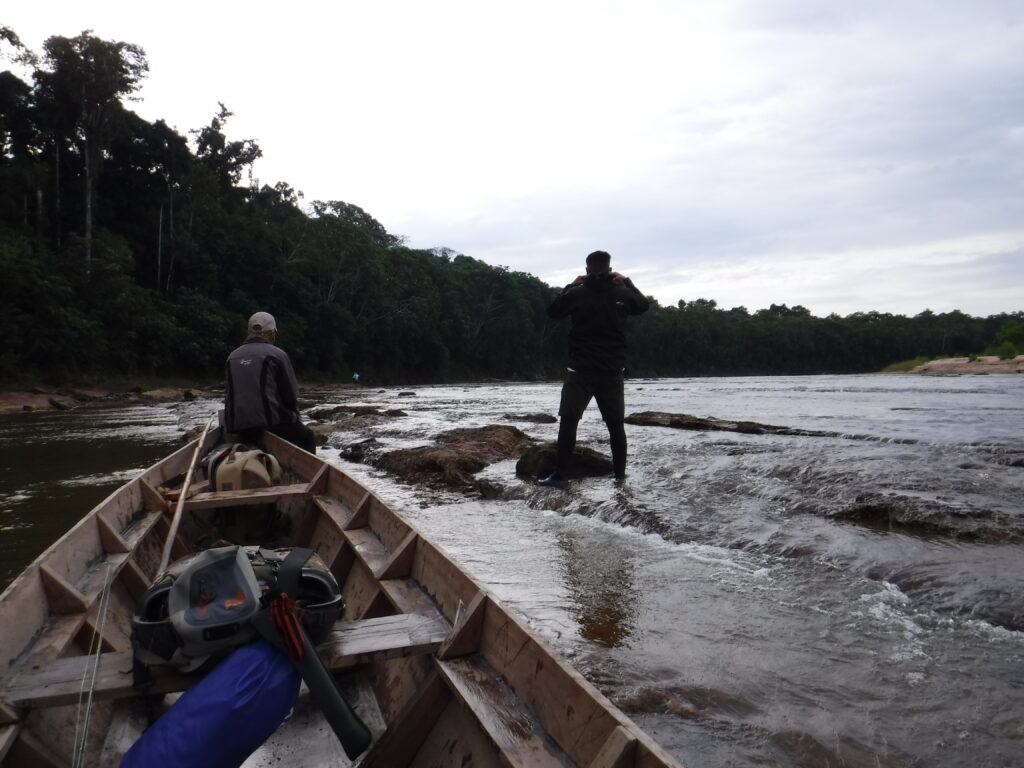It’s taken too long to get to Bolivia. A journey my heart wanted to make years ago but time had never been on my side. I finally made it, a little older, a little creakier but desperately happy to be travelling to Bolivia.
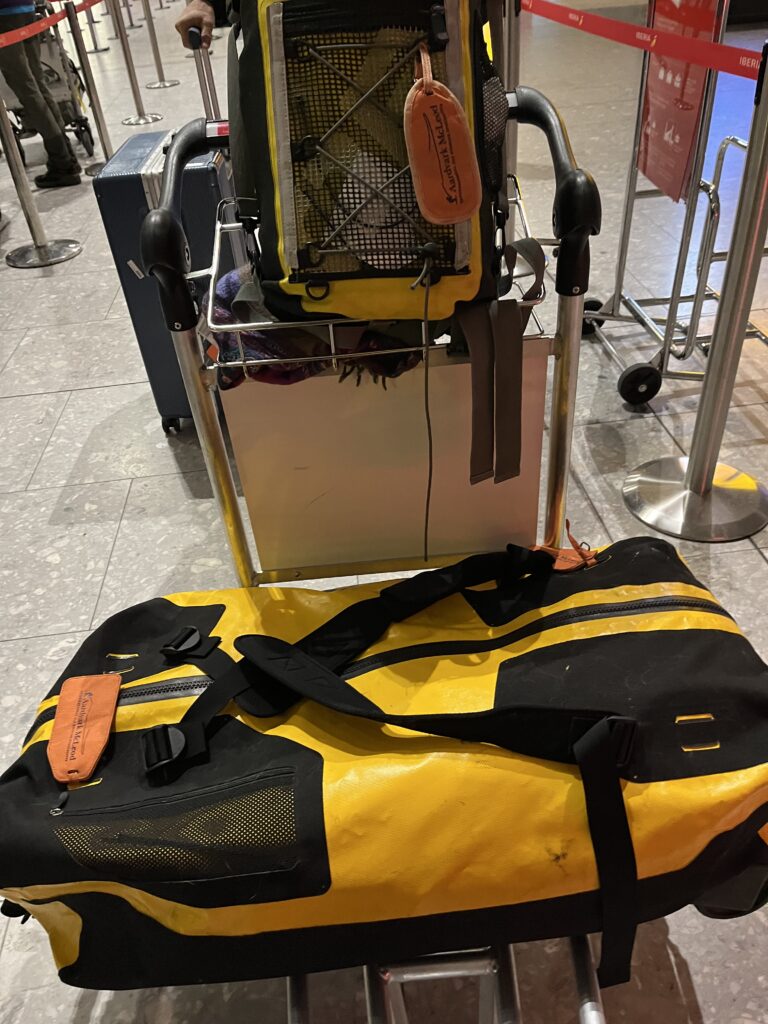
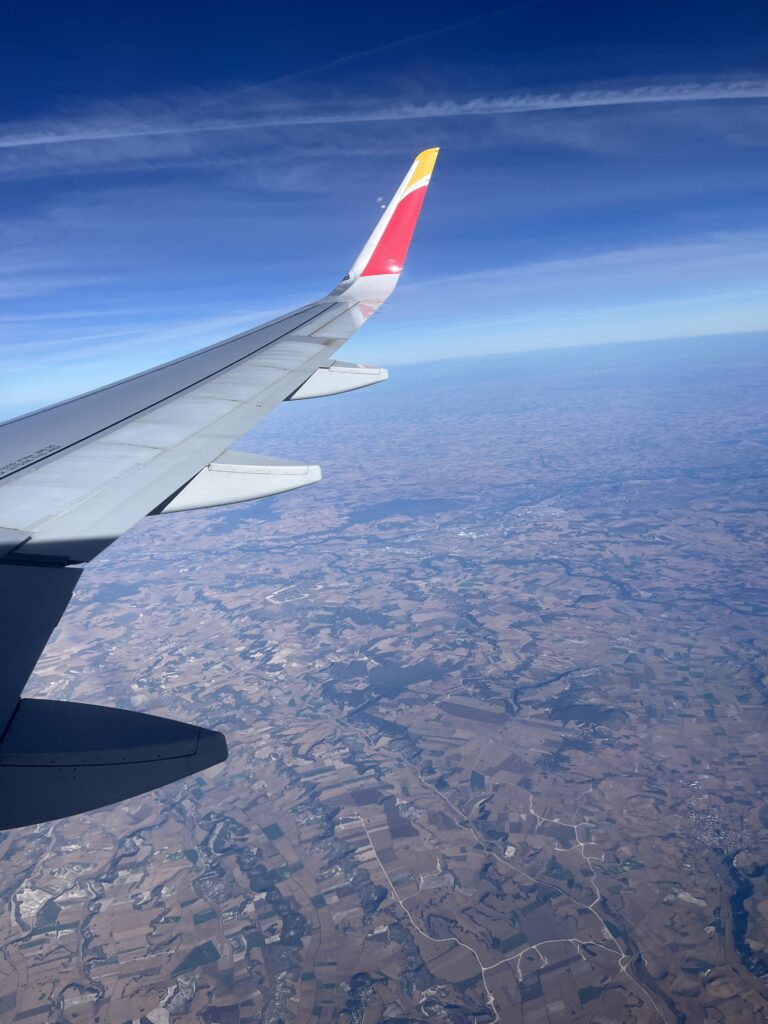
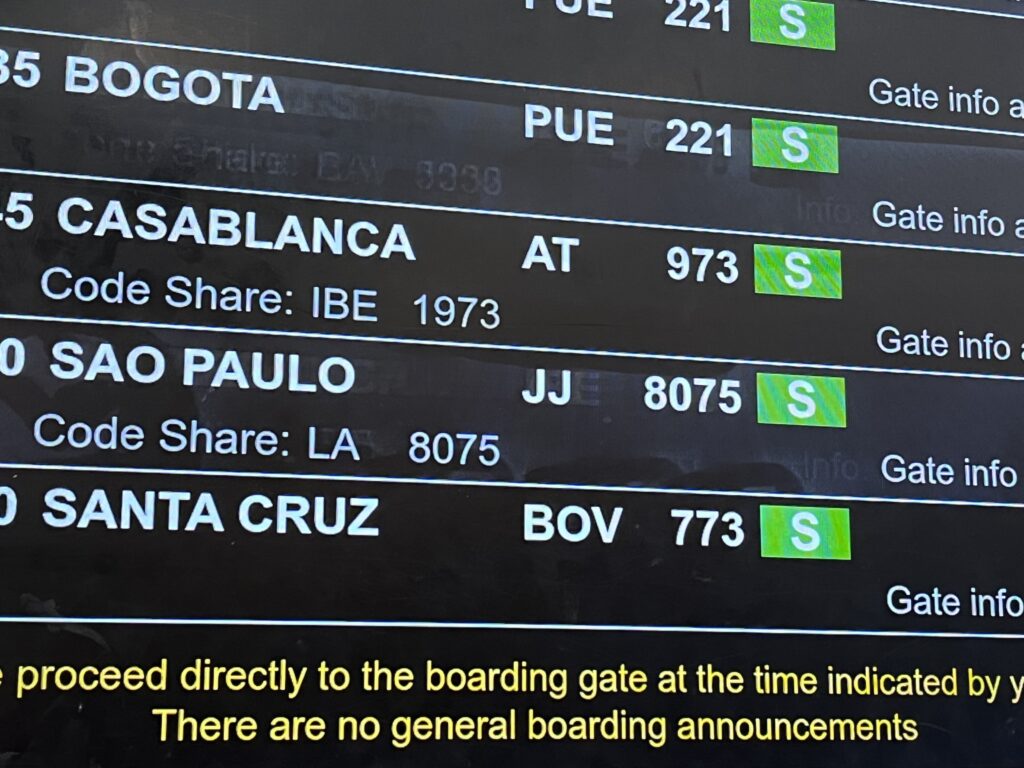
Why the enduring desire to get to Santa Cruz and from there to Tsimane? The answer, Pacu. With my obsession for tigerfish, you’d be forgiven for thinking that it was the flashy, toothy, golden dorado that had piqued my interest. In fact, it was the unflashy, not overly attractive vegetarian with weird orthodontics that had caught my attention.
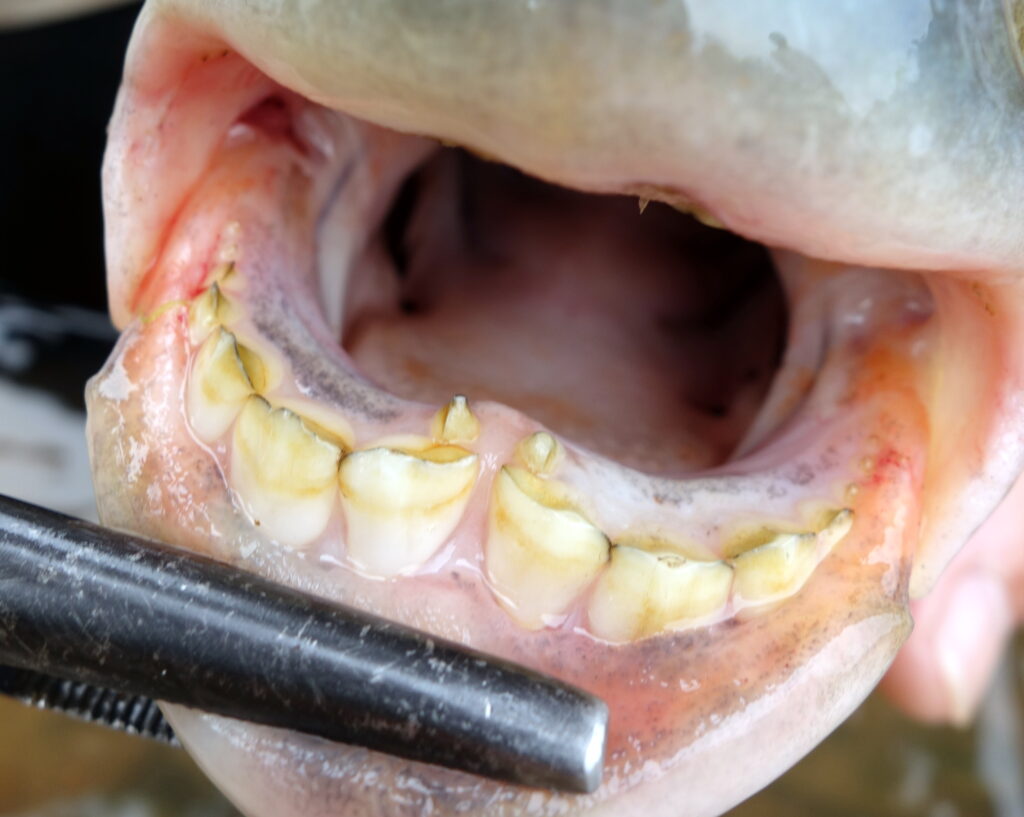

Kicking my heels in Madrid between flights, I wondered if it would live up to all I expected, or if, like the green velvet trousers that turned into a mange-tout visual disaster, it would be a tad disappointing.
It’s a long way to Santa Cruz and Bolivia’s second city seems vast as you fly over it. Customs and immigration were straightforward if a little chaotic. The passport queue was shortest for non-Bolivian passport holders, but baggage reclaim is hectic with most bags arriving wrapped and families leaving with towering piles of luggage precariously balanced on their trolleys. A short drive later and we arrived at Los Tajibos Hotel which is one of the city’s premier hotels and was excellent.
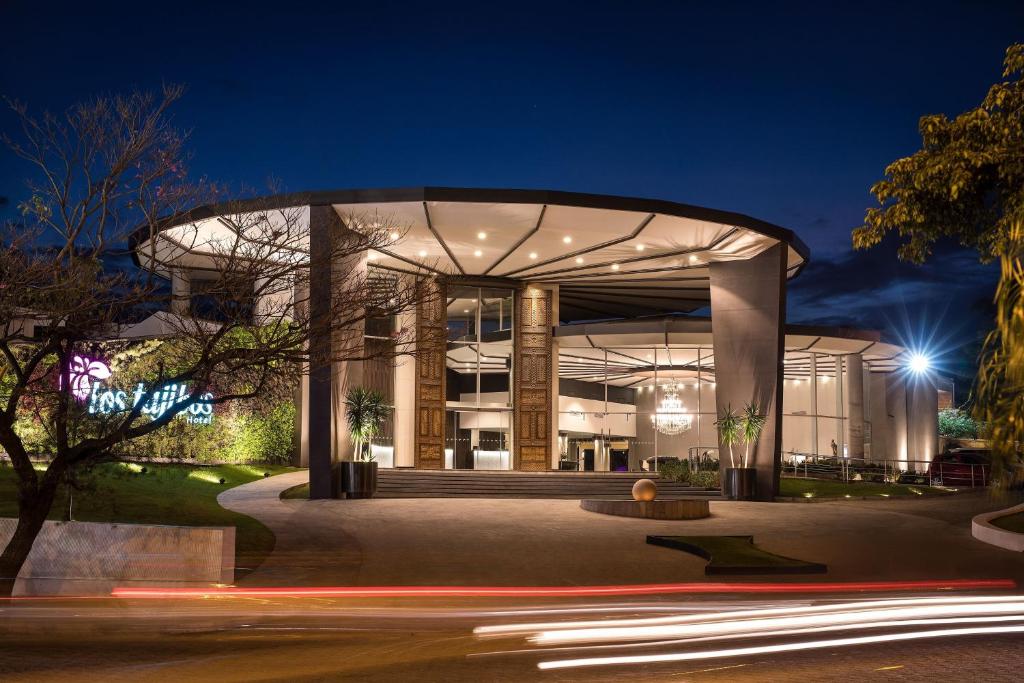
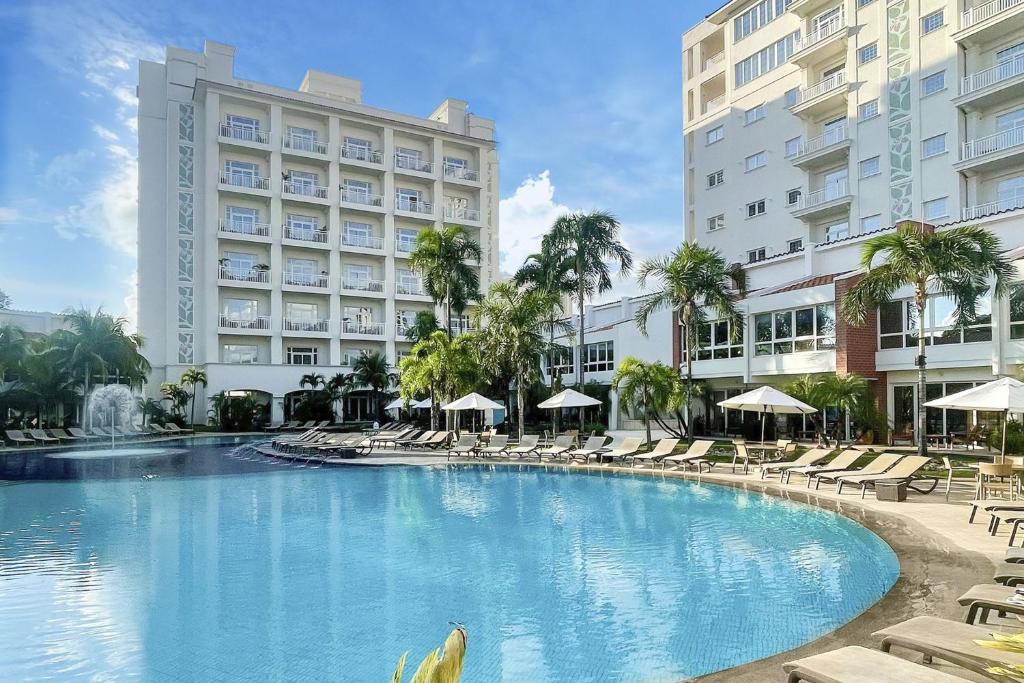

With a free day before flying out of the city, an afternoon spent exploring the Casa Principal was on the cards. The original city centre, built around the very imposing 15th century church, is a tree filled haven of peace. Wander around the side streets, and there are several small museums, full of fascinating items and written histories of the city, its discovery and evolution. Sadly, the lack of translation meant it was all a bit of a mystery. Surrounding the square, there are several places to stop and eat, grab a drink or indulge in a selection of ice creams and sorbets. Taxis aren’t expensive in Santa Cruz, 20 or 30 Bolivian from town to hotel, there is a restaurant attached to the hotel and a Peruvian restaurant just down the road. There is also an excellent meat restaurant about 5 blocks down. Lovely lovely people and the city was so clean – no rubbish, no graffiti, interesting wiring.


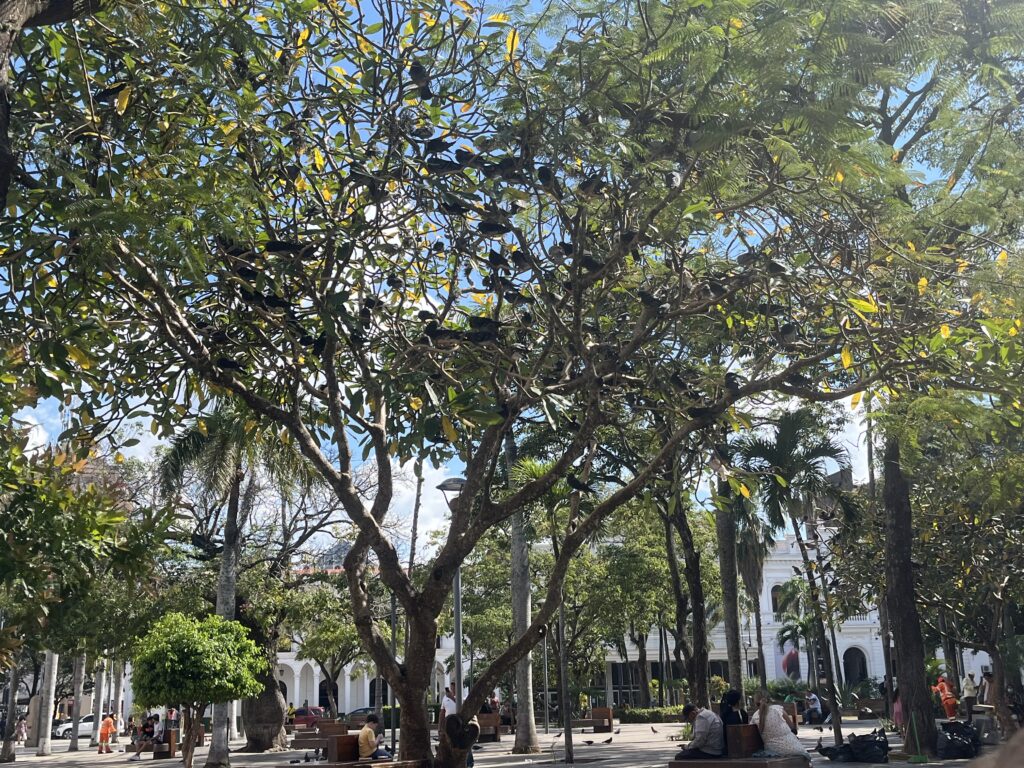
After two very nice nights in Santa Cruz, we moved on. Departure from the private charter airport, is easy and slick. After flying over the city for what seems like an age, civilization gives way to cultivated land with very little in the way of visible habitation during the hour-long flight. Very slowly you see more vegetation and less cultivation.
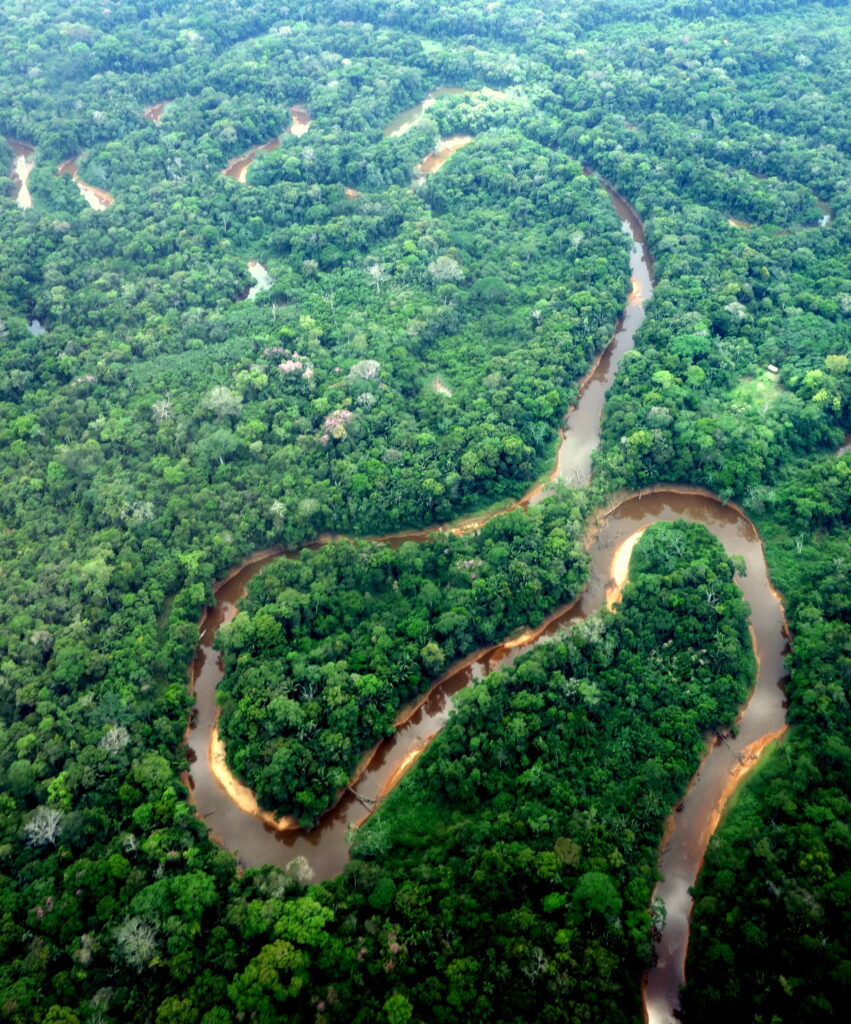
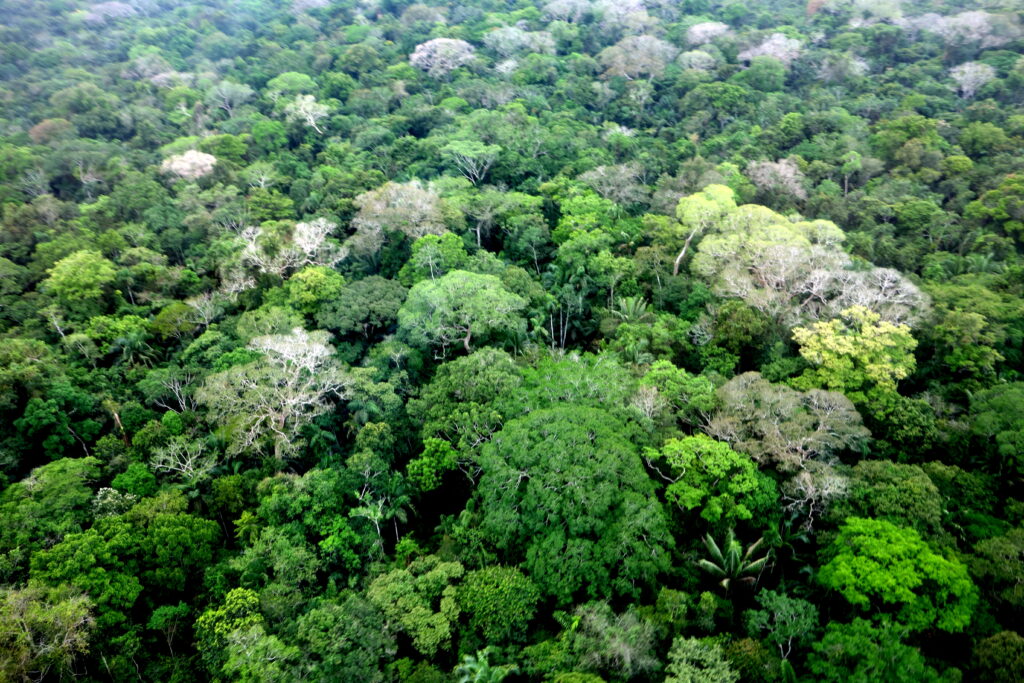
From above we had bird’s eye views of wide rivers, snaking through the jungle with oxbow lakes snuggled in under the trees. Ancient, dry river courses are visible through the trees with the new, straighter, river flows running adjacent to them. Old floodplains are being filled in with scrub and more slowly with trees as the floods are no longer there to flush out the growth. Then suddenly, a big wide river, much younger, with fewer meanders and a visible flood plain comes into view. To the right-hand side as we started to descend unbroken jungle, to the left jungle clad mountains. A small strip and a gentle bump greeted our landing.
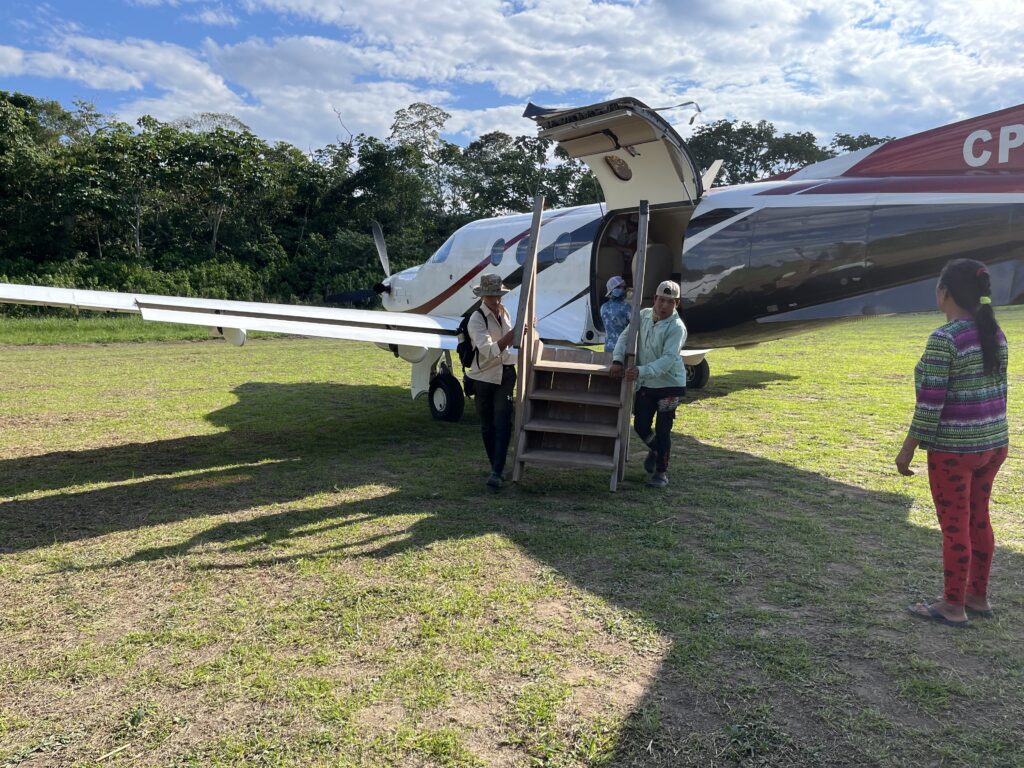
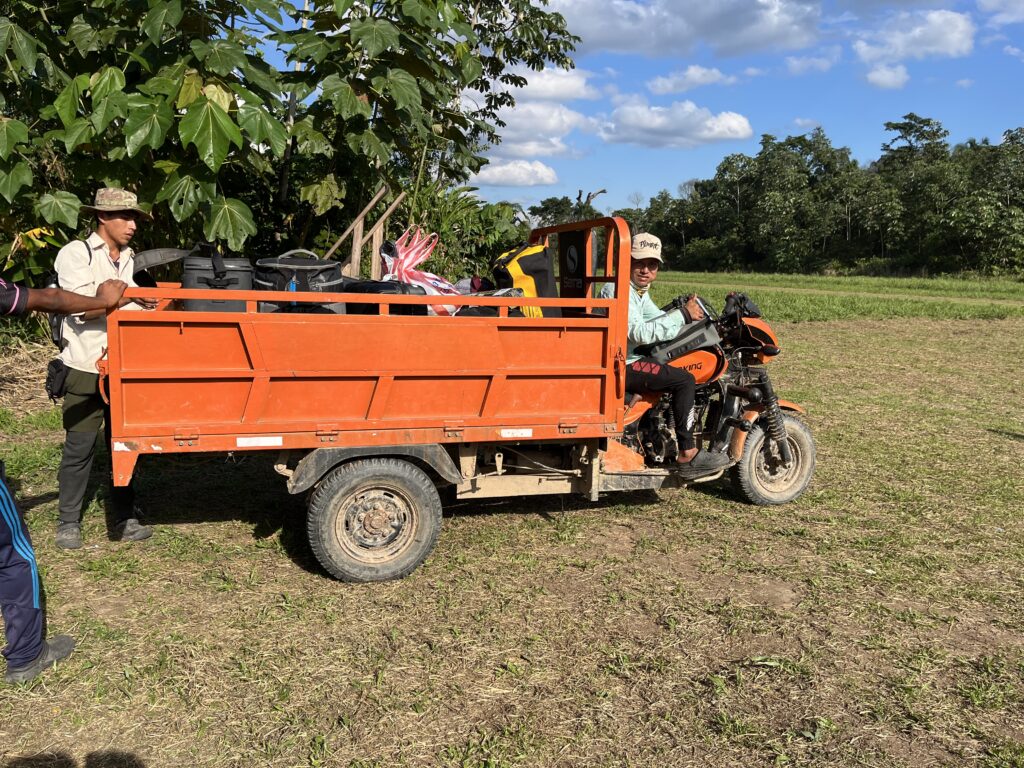

The two-hour boat ride into camp was a joy; watching the jungle change, seeing differences on every side and around every bend. It was warm with sun out and we spotted basking caiman and turtles who weren’t bothered enough by the boats to move from their sunny spots. At first, there’s little structure in the river but this increases as you get closer to camp.
A giant of a tree marks the last bend. In a jungle of giants, this one is king, dominating the riverscape as the one stand out visual landmark. One last left-hand bend, a spot of shallow water to navigate and you can see, high on a bluff on the left, a thatched roof marking camp. Tying up at the bank, the rest of the guide team are there to welcome you before making your way up the many stairs to the plateau on which Agua Negra camp has been built.
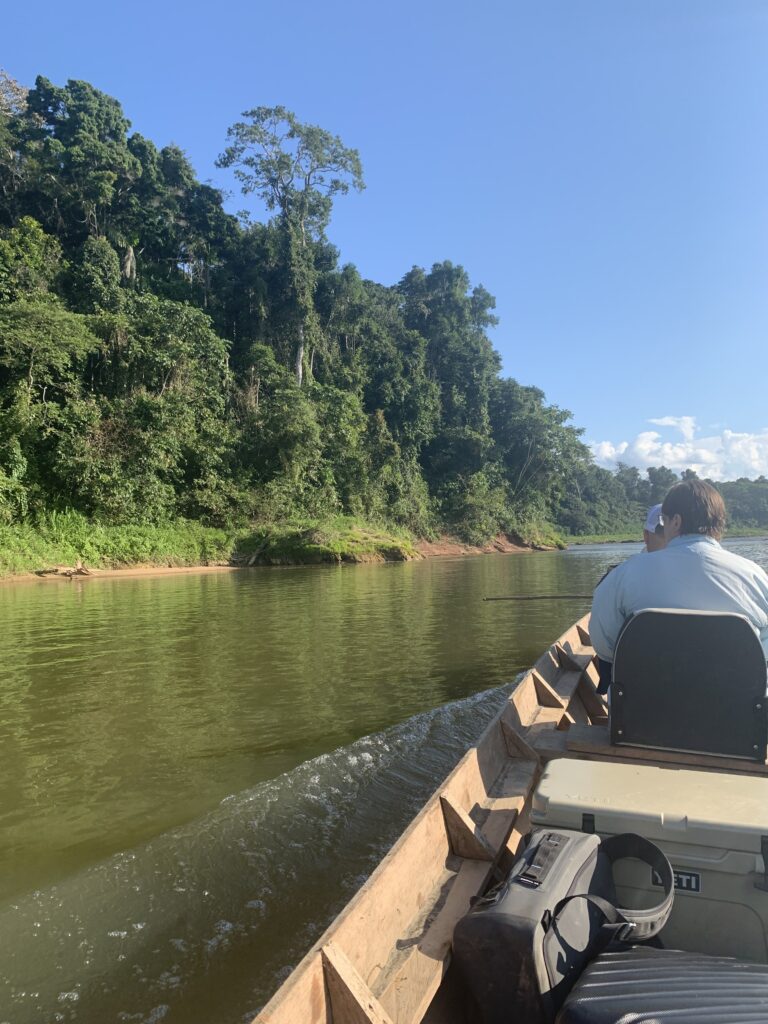
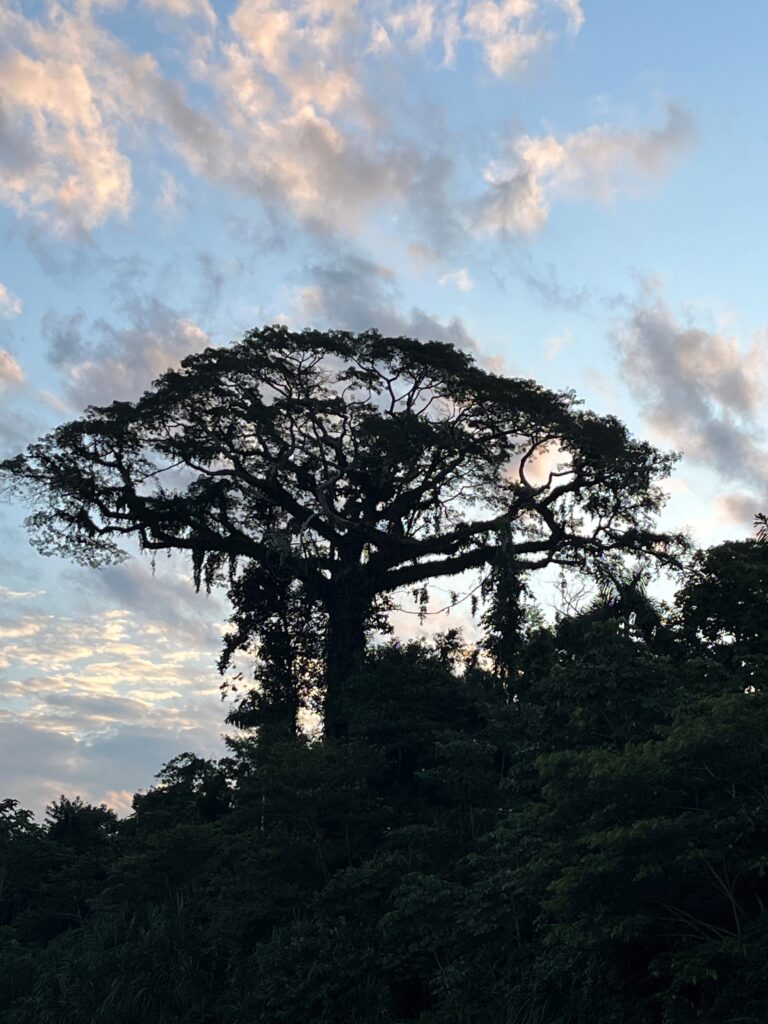
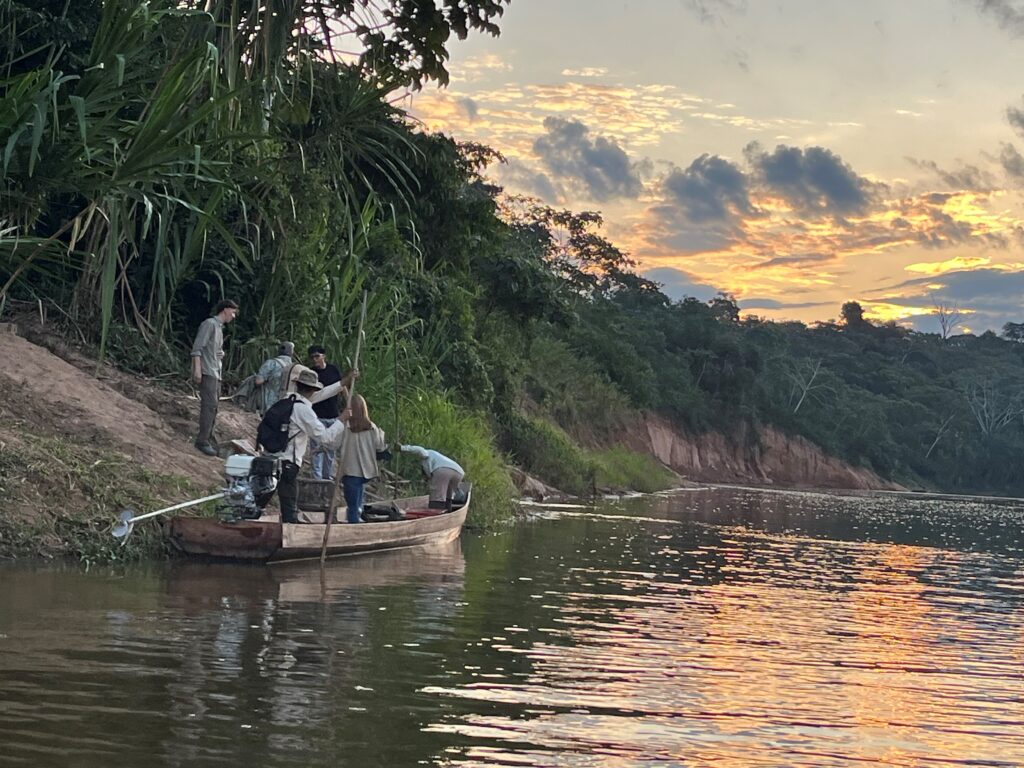
With a great view of the Secure River in front and the jungle behind Agua Negra Lodge has been built from local teak, mostly that felled when the camp space was cleared. There is a large open deck with hand crafted tables and chairs, behind which is the central dining room and lounge. The front of the building is screened and has rain covers that can be dropped when needed. There is a small bar, comfortable seating area and in the dining area, the wine cooler and dining table. The bamboo topped table is a testament to the patience and skill of its creator. There are five single rooms, one for each angler and a sixth room for a host or photographer.
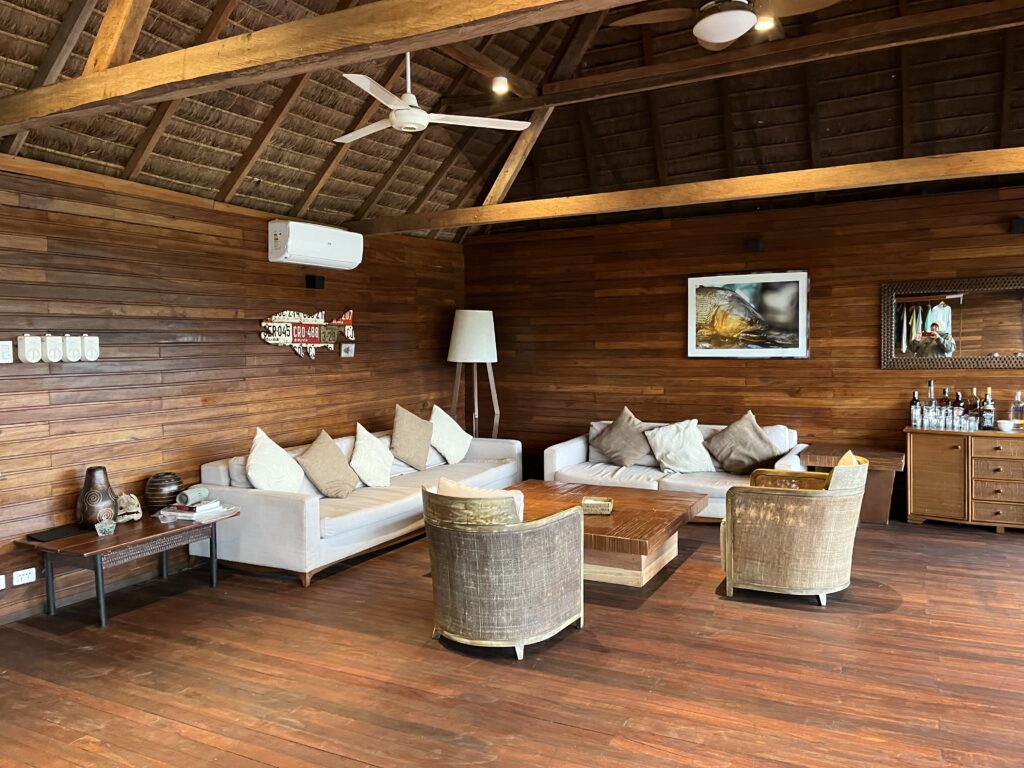

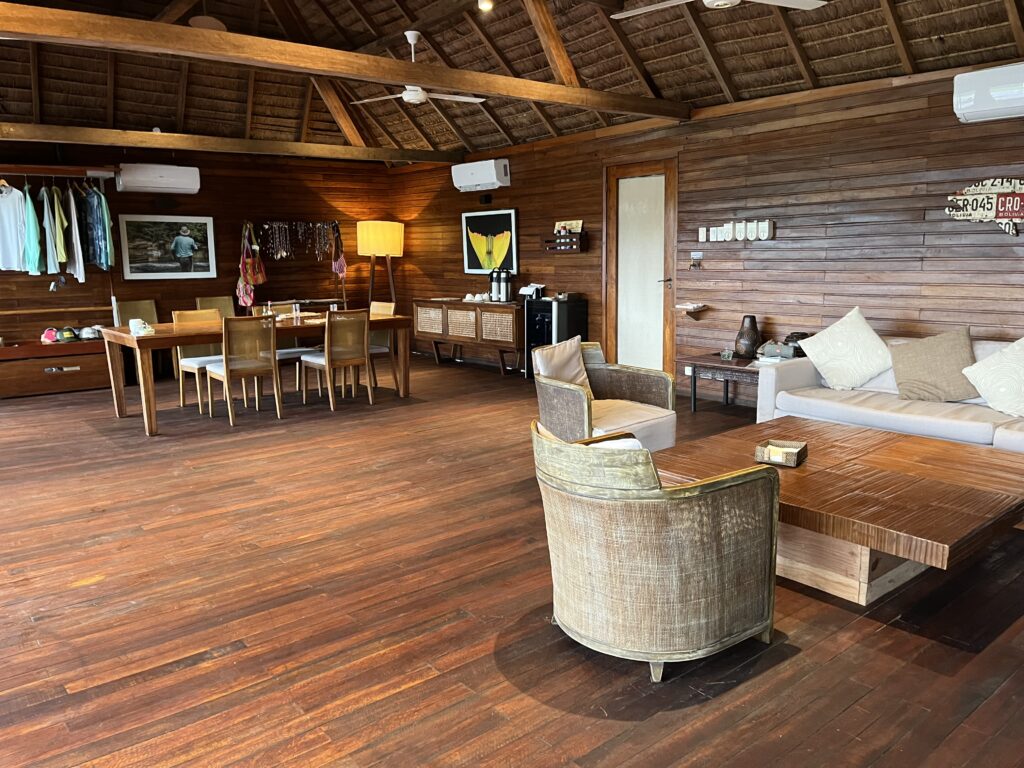
There is a display of local crafts, all labelled with their makers’ name and price. Our new office is home to a wonderful bow and arrow set, beautifully hand crafted with turkey feathers standing proud. Unfortunately, my husband was less than thrilled when I said they were to go above our sitting room fire at home so into the office they went.
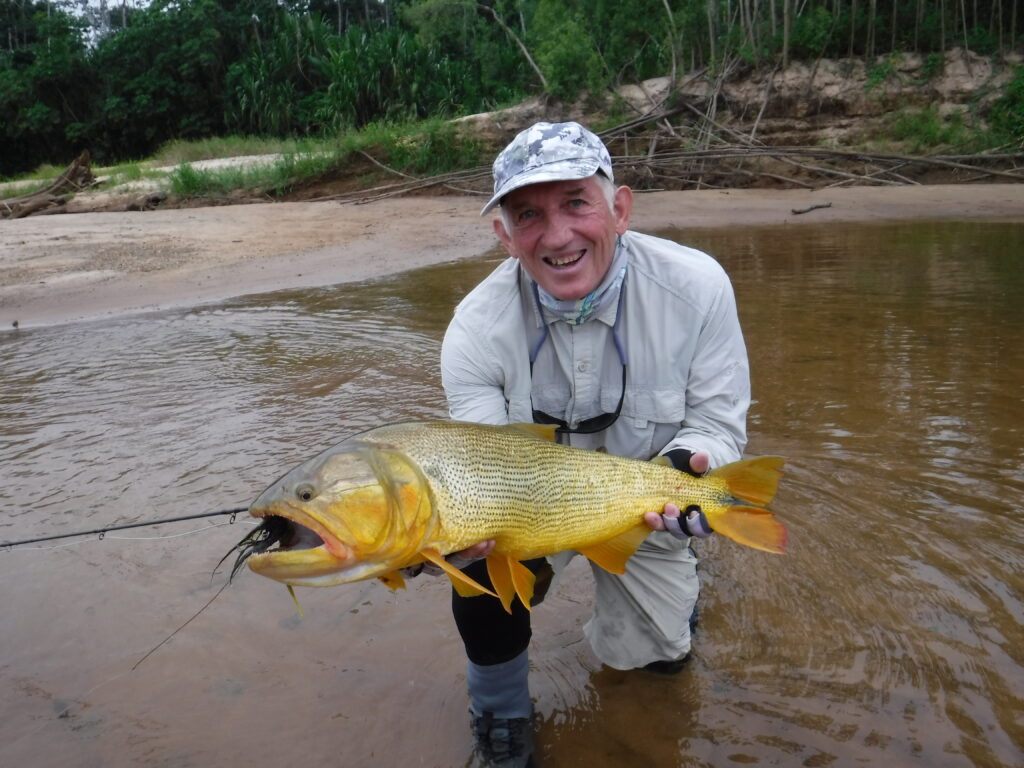
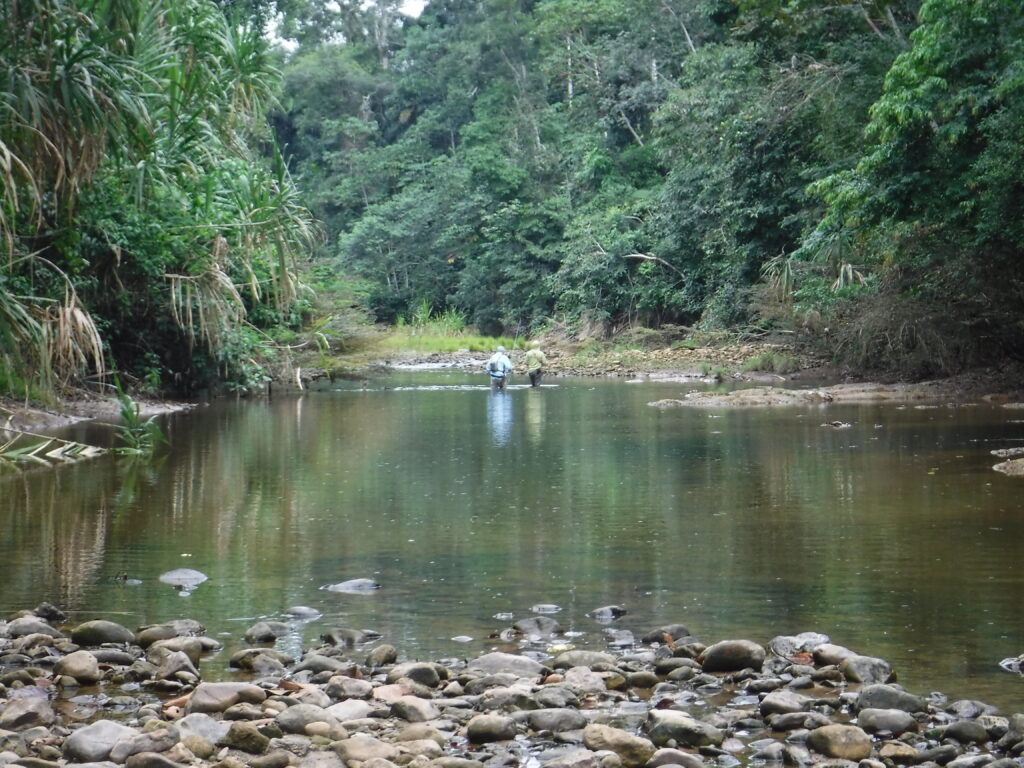
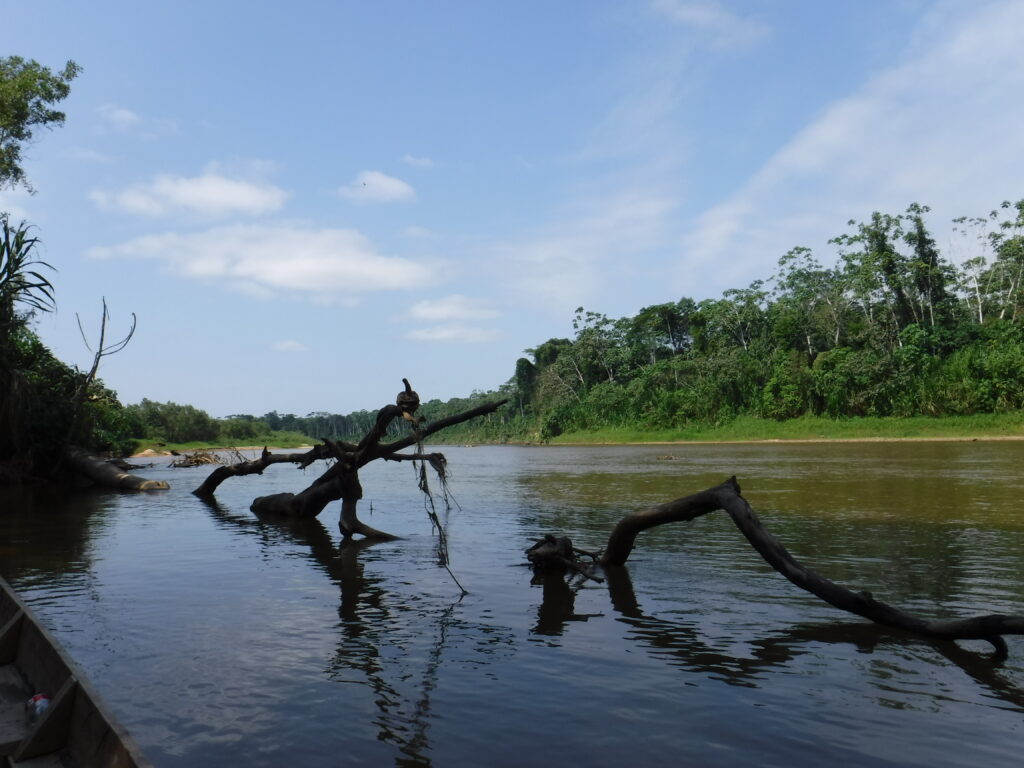
Day one
Was overcast and chilly first thing but warmed up as we got going (but by no means hot). We fished from the boat heading from the Secure to the Chimoro which is the end of the first beat. We were fishing to structure, varying the strip, with big heavy flies. Alex (my fishing companion on this trip) hooked a 12lb dorado on the swing and then got a second smaller fish between three to four pounds. A double hook up provided a bit of excitement with both our fish in the three-to-four-pound range. Alex hooked another dorado and I had some pacu touches but didn’t connect. Alex hooked up with a pacu as we were starting to head upriver to camp but frustratingly that fish wasn’t to be. We took turns fishing on the way back and I hooked a big dorado, which jumped twice, tigerfish style. It felt like the hook was well set but sadly it shook free as it went deep …. must have had some slack. Alex got his fourth dorado as we fished up to some big structure before heading home. Along with the fish I spotted some great birdlife including roseate spoonbills and cara cara.
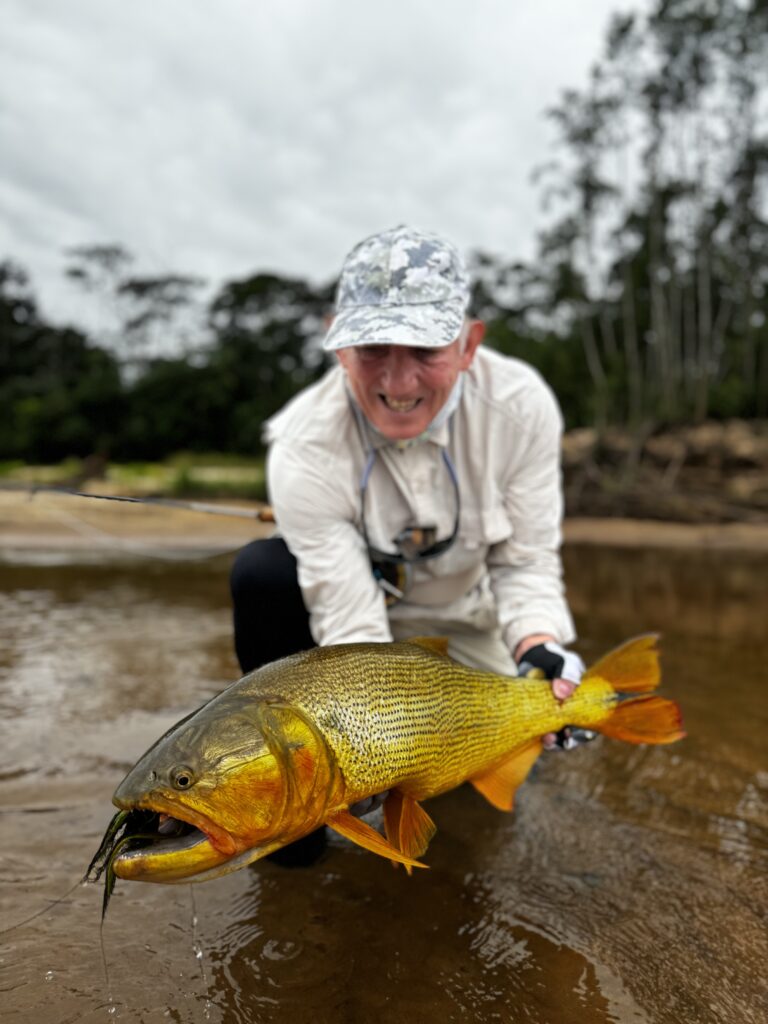
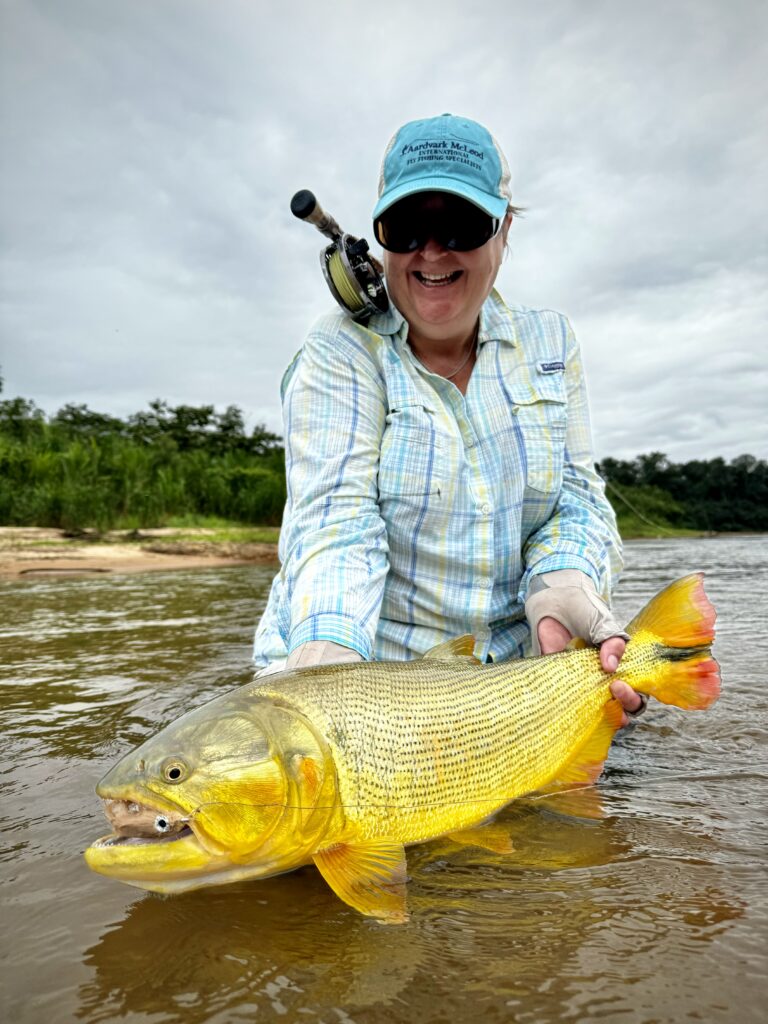
Day Two
This was a harder day, overcast and quite cold. We fished yesterday’s dorado honeypot on the way down to the Chimoro and it gave me a very nice dorado. The Chimoro is all about sight fishing for dorado and you have to be sneaky, accurate and walk like a Ninja. It’s challenging in many ways, physically and technically being the prime two. Its shallow pools are connected by tiny riffles or overflows. It is rocky, sometimes boggy and you will be grateful for your felt soles. It’s a place of few casts, but huge rewards if you get everything right. Assuming that the sábalo are having a set to, the dorado come in to investigate.
At the end of the days’ fishing, I caught my pacu. We were on a rapid on the Secure and it took a nut fly. The drag on my new Vision Merisuola reel is the opposite to what I’m used to, so it was freespooling for a heartbeat. In the rapids, flashing peach and gold, my pacu fought hard. Wide across the body, they are tough fish and bend themselves into the pushing water to create even more pressure. Pound for pound, they fight way above their weight. Slowly, I regained line only to lose it again in burst of speed until, finally, Ezquelle tailed the pacu to a communal and heartfelt sigh of relief. Now landed, the peach and gold faded to a pale grey, indicative of a fish in the main river. Those in the Chimoro and the Agua Negra tend to be darker and remain so. I was soon back on the river and rounded off my day with a lovely dorado, tucked in tight to the structure that decided my very old, tan GT brush fly was a tempting morsel.
I added Amazon kingfisher, ringed kingfisher, rufus bellied nighthawk, red and blue macaw and semi palmated plover to my list. We arrived home to a very welcome hot water bottle.

Day Three
A cold front greeted us this morning and we woke to rain with descending cloud cover. After a wet morning, we came back to camp for lunch and a change of clothes. Alex had four fish decreasing in size and I had one lovely little jumper, but I was simply so cold I couldn’t strip fast and coordinating to cast became harder as the afternoon went on. Watching a honey bear scramble up a very steep bank was a highlight of a rather depressing day.
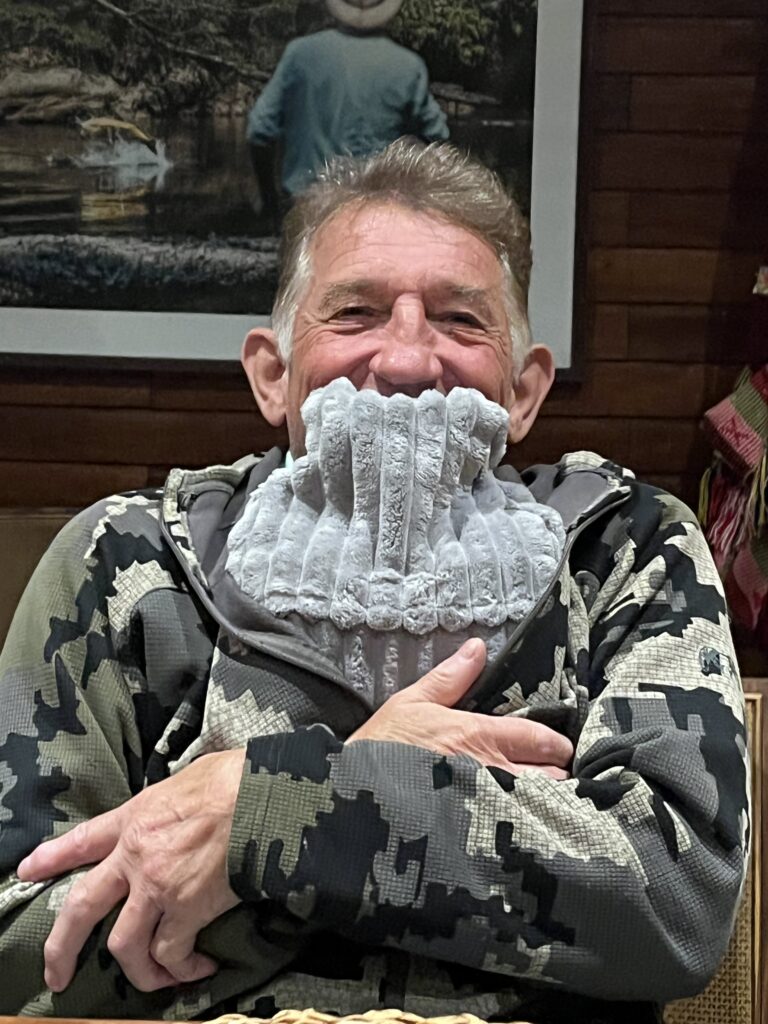
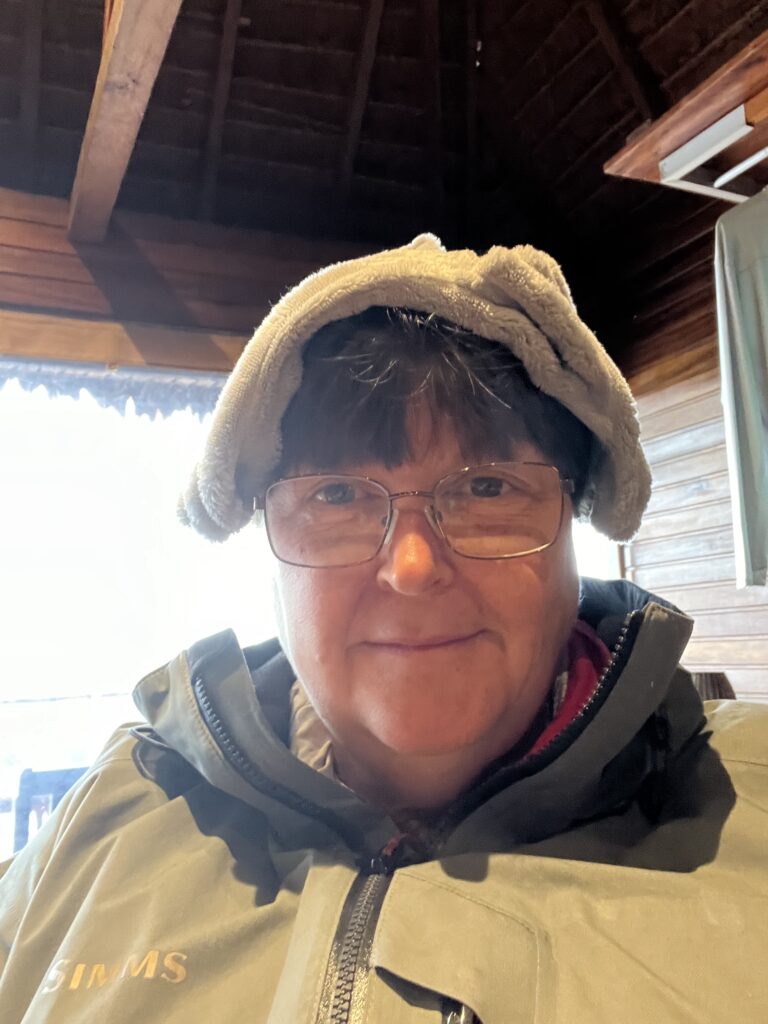
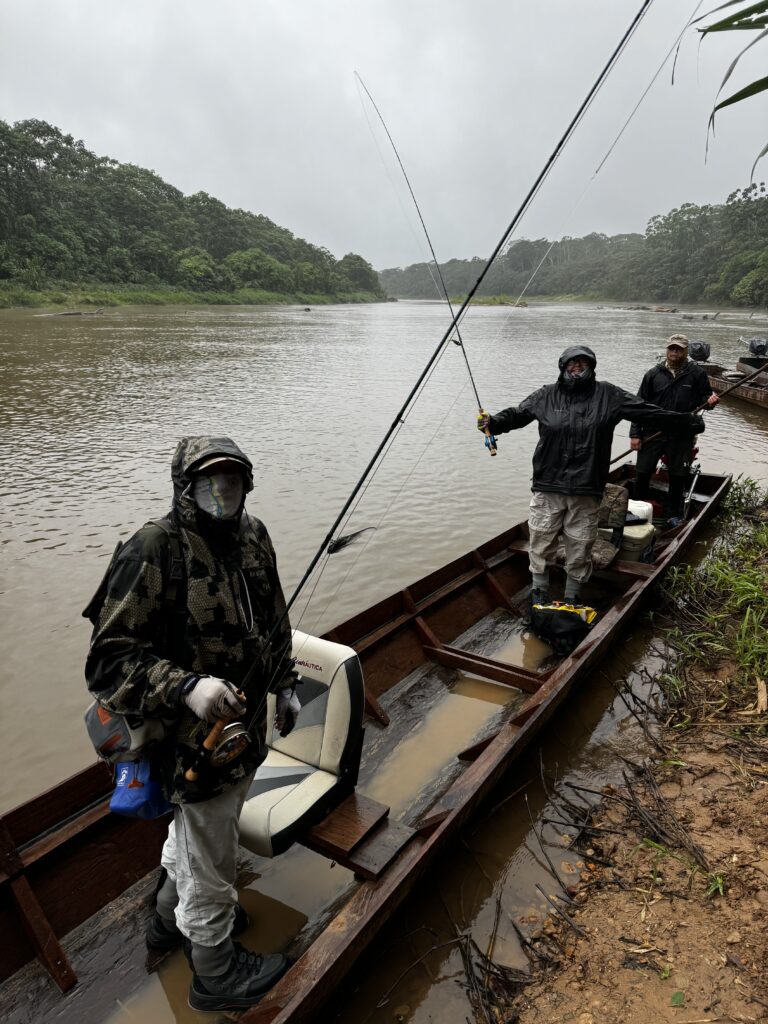
Day Four
After rain all night, day four dawned wet and cold. I stayed in camp and worked as Alex and Eszquiel set off for the Agua Negra. They returned at lunchtime, having had some action but the dorado either weren’t feeding or were in such a feeding frenzy with tails and heads out of the water that they missed the fly. They had a blank afternoon on the main river and the bottom section of the Agua Negra. It was simply too cold and the fish were sitting tight and deep.
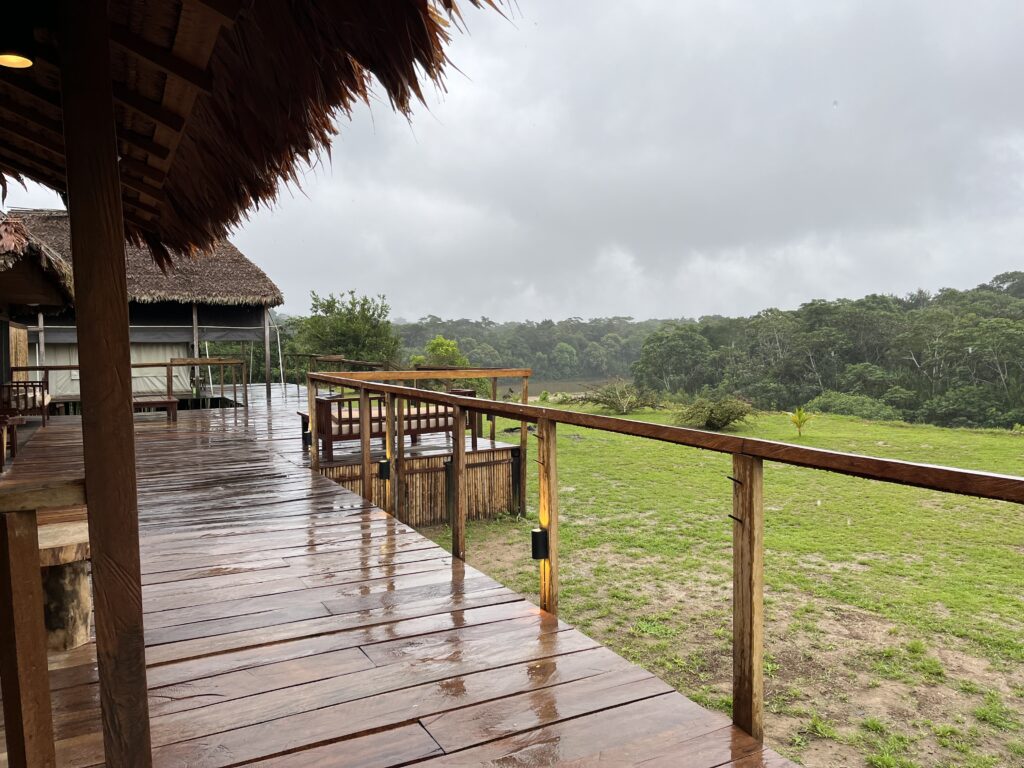
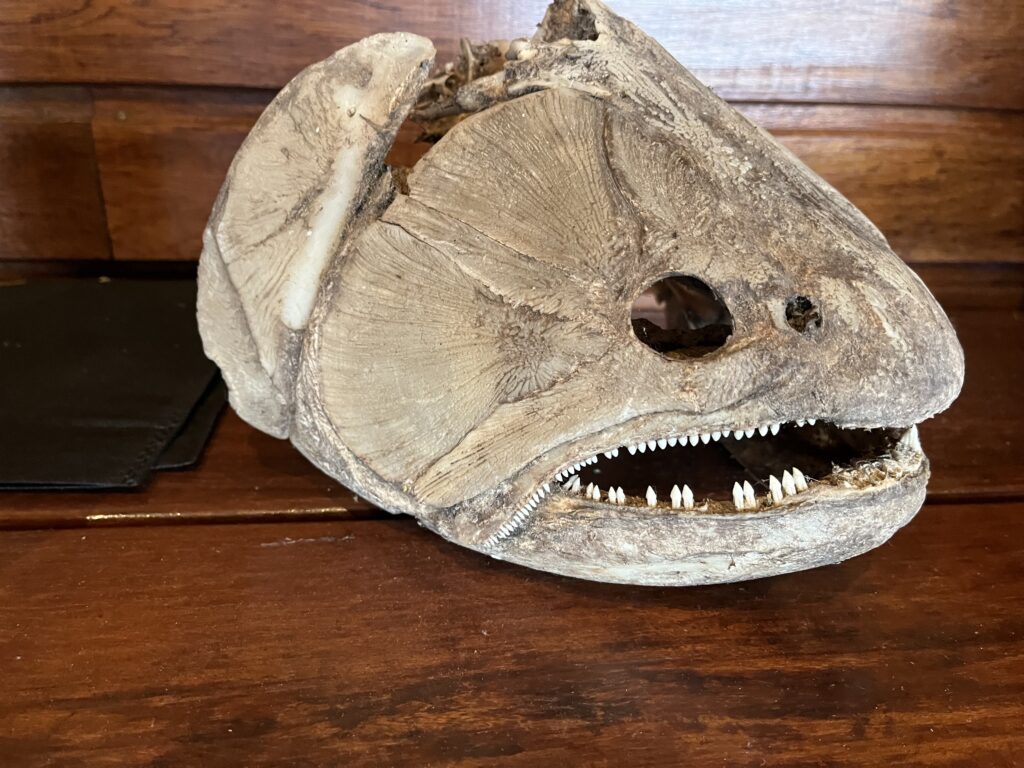

Day Five
The day dawned slightly better and we walked down to the boats on the Agua Negra. Without warning, by the bank to our left, a small group of dorado broke the surface, chasing sabalo and fighting hard. It feels wrong to put your fly right in the middle of fish, literally on their heads, and to strip as soon as it hits the water. Fast movement and noise attract the dorado so you need to put your fly right into the mix. Quite often they are causing so much chaos that your fly just gets pushed out of the way, but if they are still feeding, pick it up and put it back in amongst the fray. It was short lived chaos and the fish quickly sank out of sight. On we went, moving quietly up the Agua Negra, being poled up and hopping out every now and then in the shallower sections. I had another chance at feeding fish with a huge dorado breaking away from the pack to follow my fly before turning away and sinking back into deeper water with the rest of the pack. Making our way back down the Agua Negra, I could only marvel at how very lucky I was to be there on a truly beautiful piece of water. So very different to the Chimoro and the Secure with its towering cliffs, clear pools and narrow, fast running sections. The birds were quiet, but we did see the remnants of a jaguar kill, along with wild boar coming out of the cover of the jungle to drink before moving slowly back out of sight.
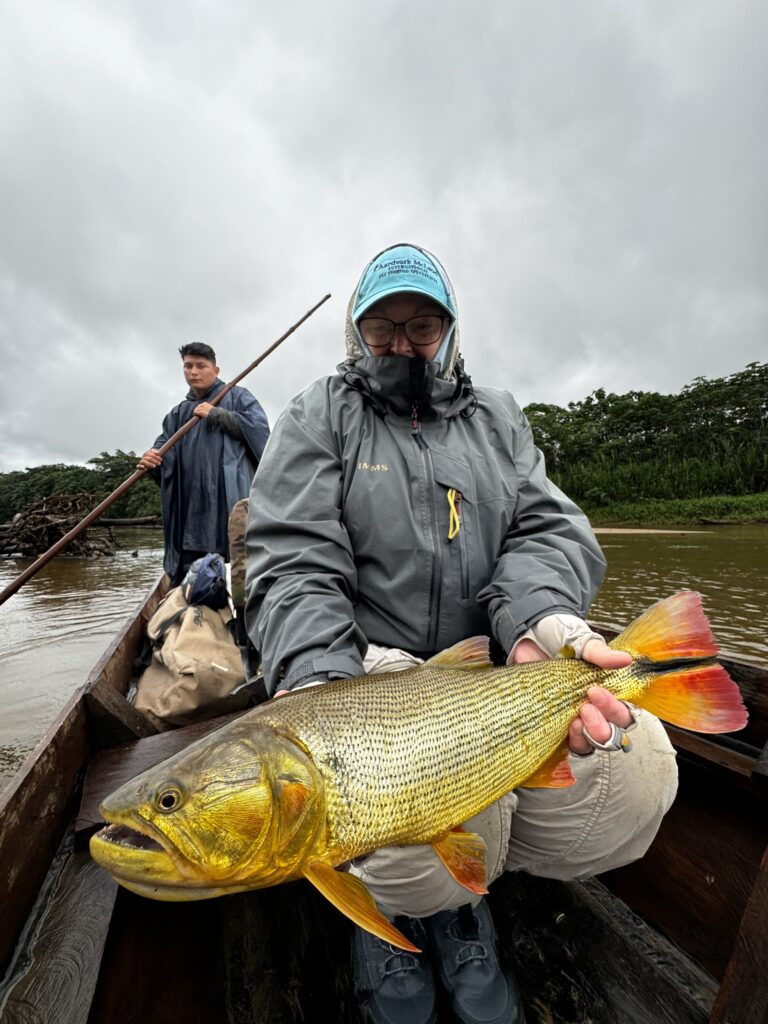
Day Six
Clear skies heralded our last morning, with the temperature was significantly warmer. The fish were most obliging as we made our way down the Secure to the confluence with the Chimoro. While there were many flies stuck in the structure, most went in close enough to attract attention from the dorado, big and small. The trick is to get your fly as close in as you can, pretty much dropping off the structure and stripping it straight out. There is so much hidden under the water you always run the risk of hooking up underwater if you let your fly sink too much but sometimes you need to take the risk as the big mammas sit a little deeper. The honeypots were quiet but the change in temperature felt that we were fishing a completely different river system. The smaller dorado were quick to dart in after the fly but equally as quick to dart off again while the bigger fish were hungry and there was little hesitating. Dorado jump so keeping your stick straight is key, you need the tension as there isn’t much flesh in those toothy maws for your hook to maintain purchase. We both filled our boots, making up time for the very cold and wet days in the middle of the week and we finished our last day on the water with very healthy tallies – Alex with 11 dorado and a pacu and me with nine dorado to my rod.
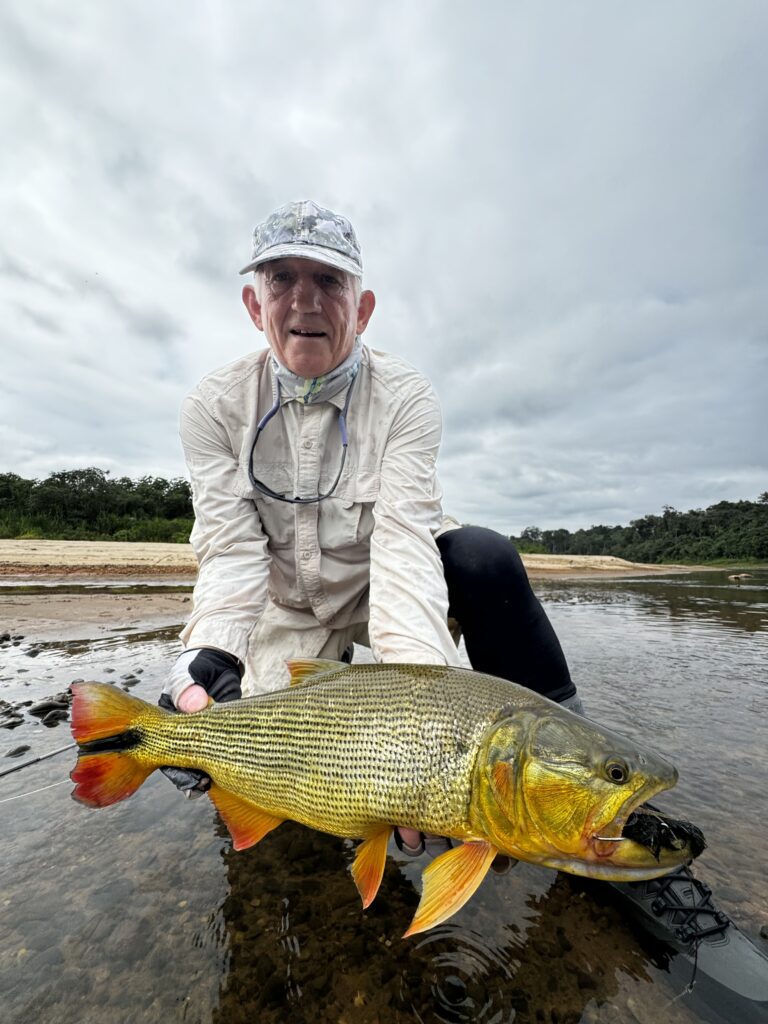
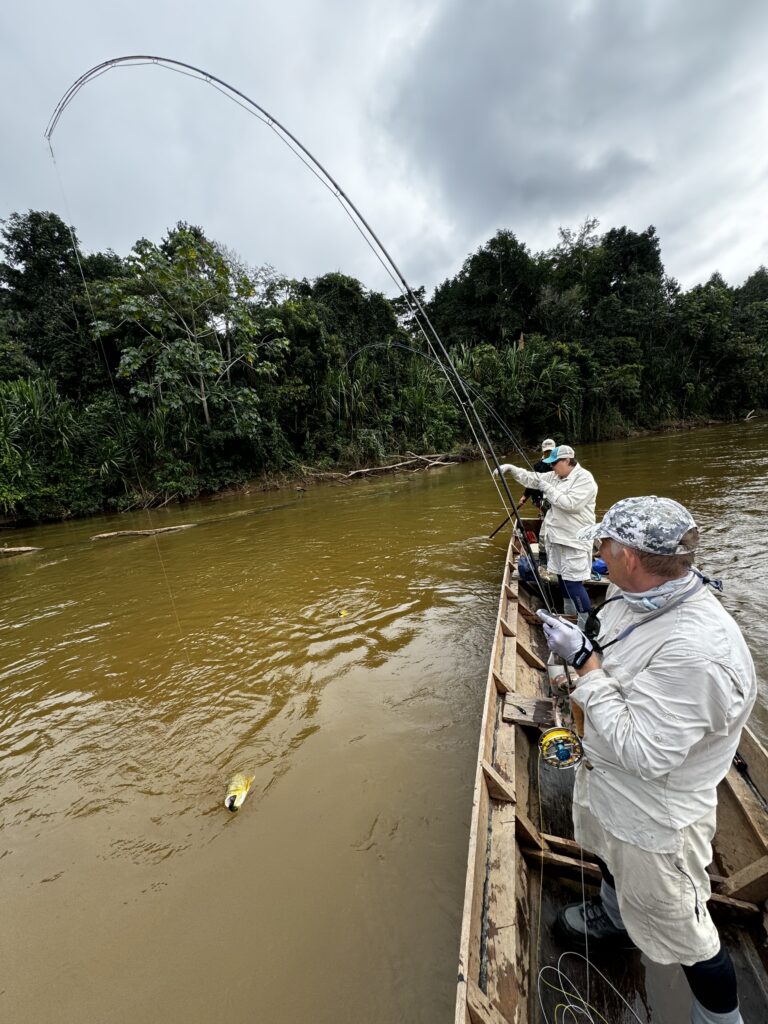
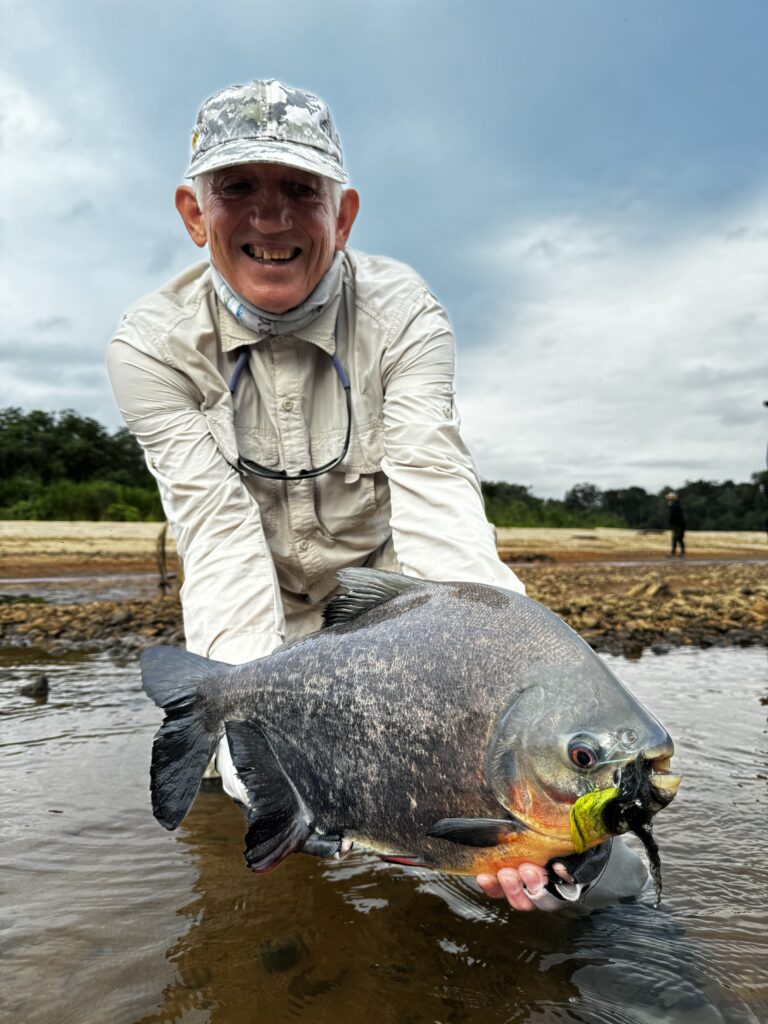
Day Seven
This is the day we weren’t supposed to have. The concentrated rain had flooded the runway and despite the best efforts of the woman and children from the village trying to empty the puddles, no-one was coming in or going out. No fishing for the day as the guides needed their day off so we hung out for the day, watching the cloud cover clear very slowly and the distant mountains once more come into focus. As the day warmed, the previously silent jungle shook off the chill and the birds started singing and a huge variety of moths moved out of hiding into the warmth.
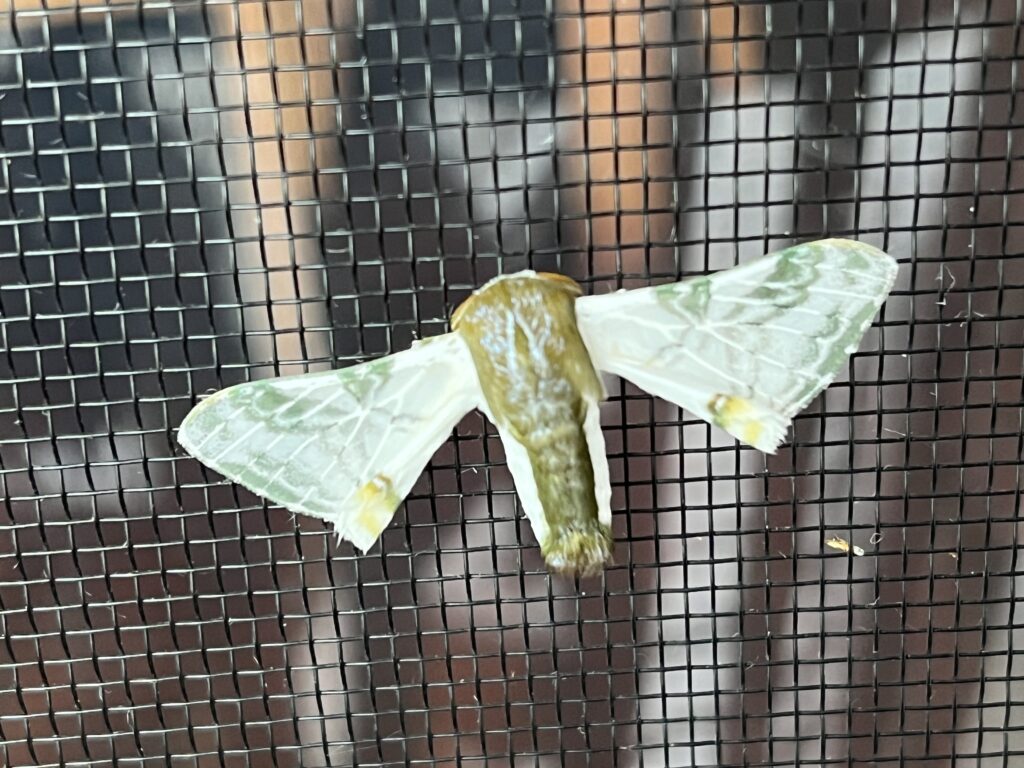

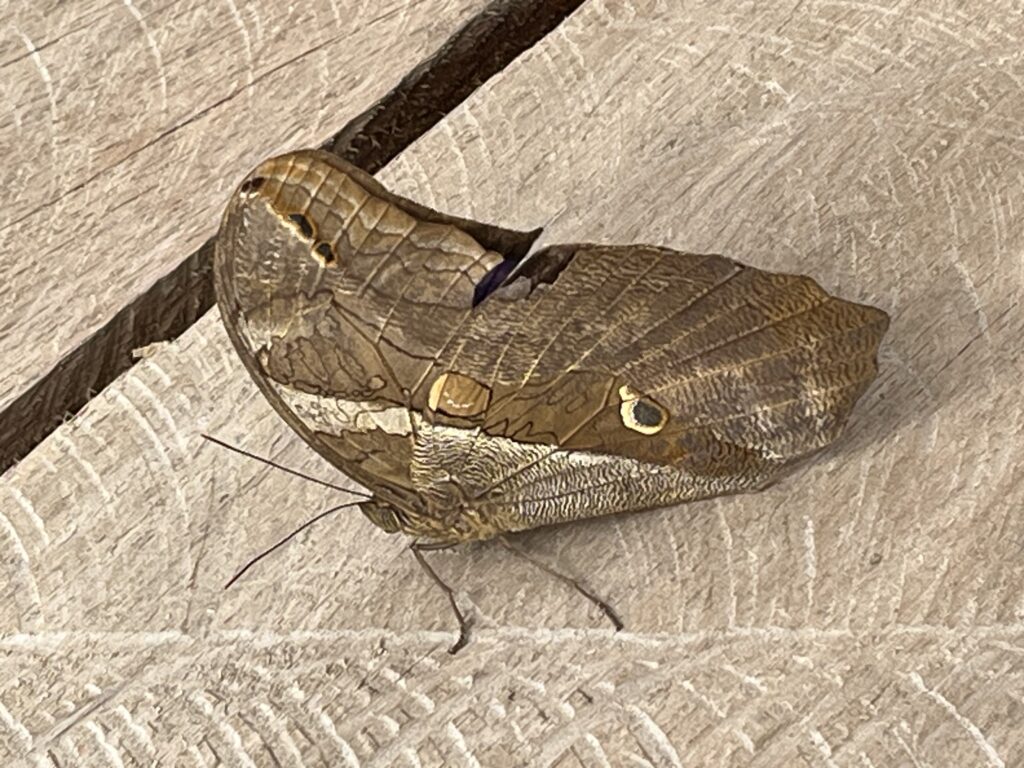
Day Eight
Leaving is always bittersweet. On one hand I could happily have stayed and carried on fishing and birdwatching. On the other, I was looking forward to dry clothes and being at home in my garden, turning my aviary birds into drama queens by checking in on them. The journey back to Ororombo was much quicker as we were going with the flow and we were soon back at the airstrip for the last flight out of the day. Without warning, the peace and quiet was broken by the distinctive wump-wump of helicopters and in a banking manoeuvre worthy of an Oscar, the two helicopters based at Pluma came in low and loud to land and disembark their passengers who were joining us on the flight back to Santa Cruz.

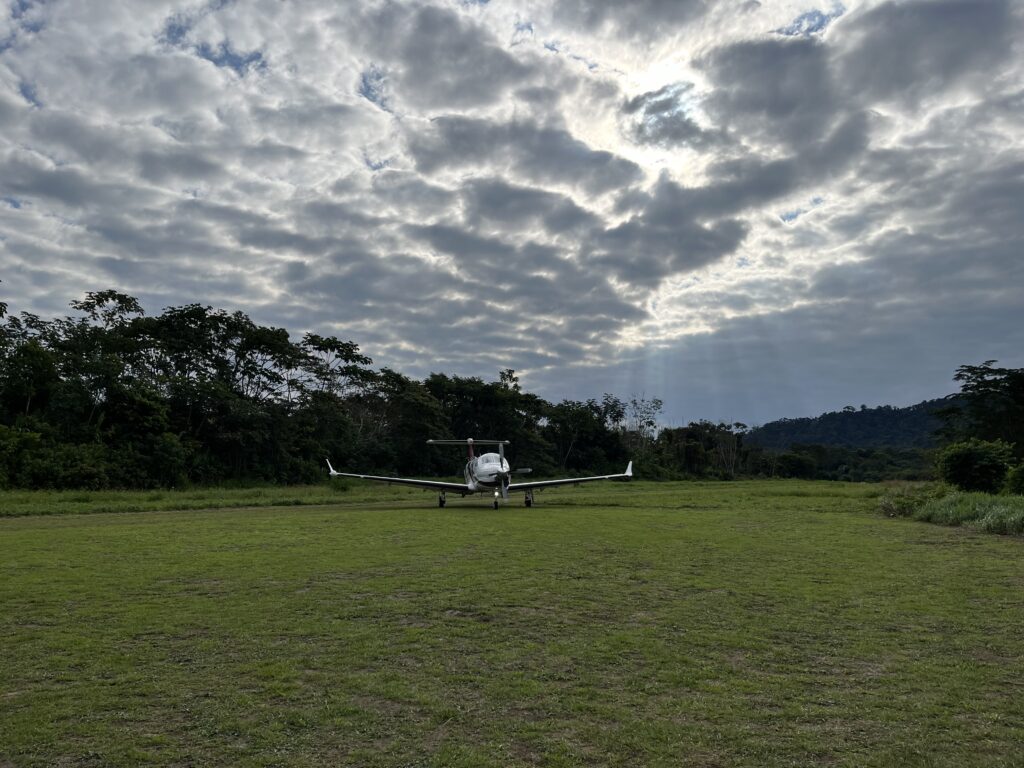
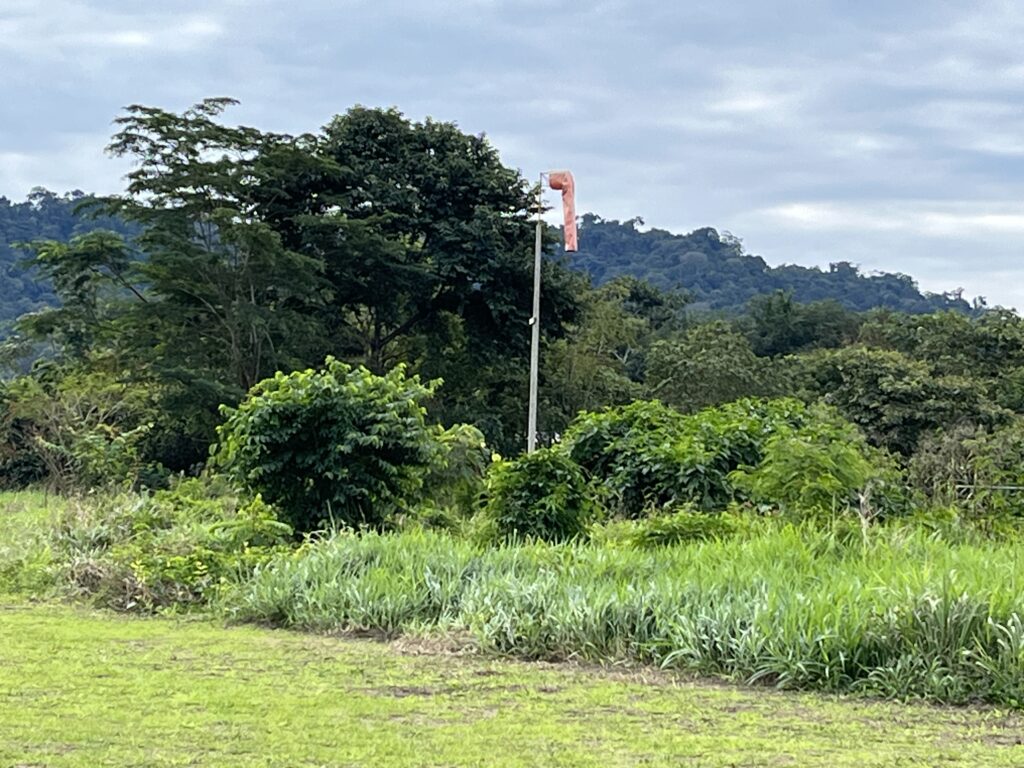
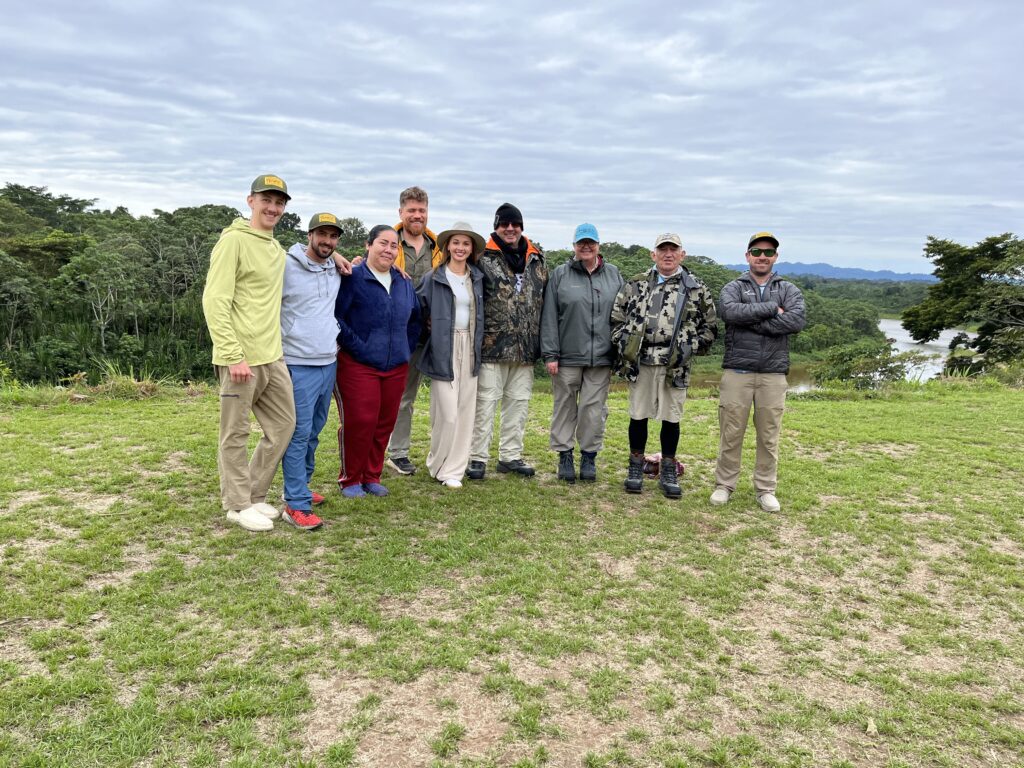
If you would like more information then please do not hesitate to contact Olly Thompson or Charlotte Chilcott or call our office on +44(0)1980 847 389. Fishing reports for 2024 are online HERE so you can keep up to date with how the season has gone in all the camps.
Availability for Agua Negra, Pluma (both heli and regular) and Secure Lodges are online HERE.
About the author: Charlotte Chilcott
